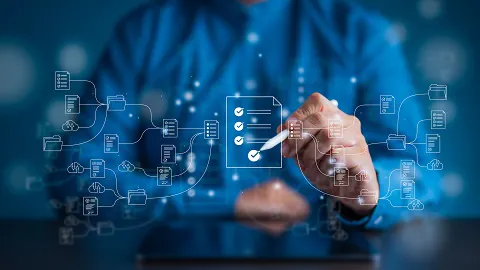Quantzig stands out as a leader in business analytics due to its unmatched expertise in leveraging Business Intelligence (BI) and data mining to drive impactful insights. Our specialization in multidimensional data models and actionable intelligence allows us to optimize performance across marketing analytics, customer analytics, and more. With advanced techniques like predictive analytics and data visualization services, we tailor strategies to your unique needs, ensuring precision and efficiency in every solution.
At Quantzig, we lead the way in Marketing Analytics, harnessing Business Intelligence (BI) and Data Mining to uncover deep insights into your marketing performance. Our expertise in Multidimensional Data Models and Actionable Intelligence allows us to optimize your Marketing Returns and drive impactful Trend Analysis.
Learn More about Marketing AnalyticsQuantzig excels in Customer Analytics, offering deep insights into Customer Behavior Trends and Demand Prediction. Our expertise in Data Visualization, Predictive Analytics, and OLAP ensures precise Customer Segmentation and Performance Measurement for actionable, customer-focused strategies.
Learn More about Customer AnalyticsQuantzig's Supply Chain Analytics uses data mining and multidimensional data models for optimal operations. We provide inventory analysis, trend analysis, and demand prediction for effective enterprise performance management, overcoming data swamp and data silos.
Learn More about Supply Chain AnalyticsIn Operations Analytics, Quantzig blends Business Intelligence (BI) and Actionable Intelligence to enhance processes. We leverage KPI Reporting and Performance Measurement to spot improvements, using Data Visualization Services and Mobile Business Intelligence for ongoing optimization.
Learn More about Operations AnalyticsQuantzig excels in Ecommerce Analytics, leveraging Data Mining and Predictive Analytics to enhance online sales. We offer insights into Customer Behavior Trends, Sales Performance Tracking, and Marketing Returns. Our Trend Analysis and Actionable Intelligence guide your Digital Transformation, tackling Data Silos for greater impact.
Learn More about E-Commerce AnalyticsQuantzig partners in Digital Transformation, merging Business Intelligence with Predictive Analytics to revolutionize processes. We tackle Data Swamp and Data Silos with Data Visualization Services and Enterprise Performance Management, ensuring an effective, sustainable strategy.
Learn More about Digital AnalyticsAt Quantzig, we deliver bespoke Business Analytics solutions designed to meet the unique needs of your business. Our approach ensures that every insight is customized to reflect local market conditions and specific business contexts, leveraging advanced techniques like Data Mining, Predictive Analytics, and Multidimensional Data Models. We accelerate your journey to actionable results through Data Visualization Services, Online Analytical Processing (OLAP), and Mobile Business Intelligence, ensuring you stay ahead in a competitive landscape.

Explore how our solutions bridge the gap between raw data and strategic insights, enabling your business to make informed decisions, unlock opportunities, and drive unprecedented growth. Elevate your analytics journey – download our Business Analytics Services guide today.
Download Now